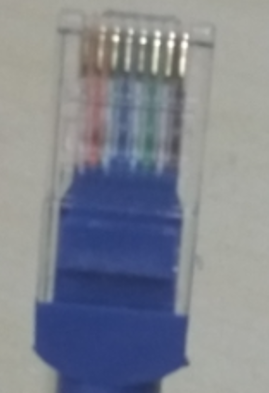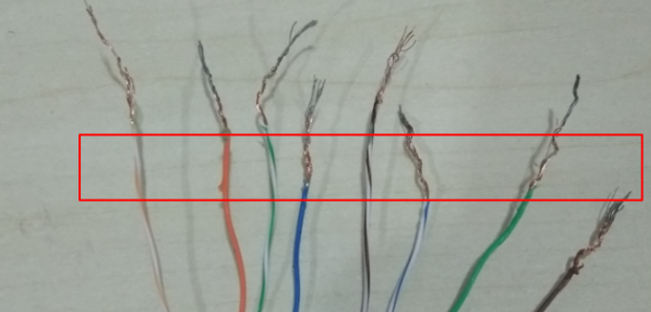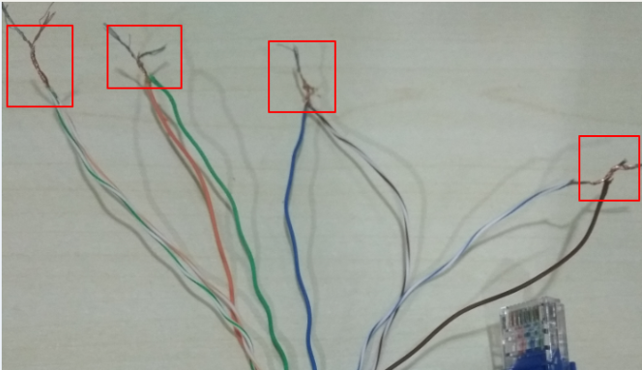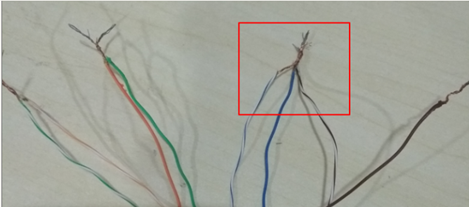1 Lost Of SgnaI(LOS)
收端在176个连续脉冲周期内没有检查到E1线上信号变化,则上报此告警,同时通过NFAS向对端发送Remote Alarm Signal.即第三位被置1。
2 Remote Alarm Indication(RAI)
收端接收到NFAS,发现.第三位被置‘1‘,说明对端发送了Remode Alarm Signal,则上报此告警,对端发送Remode Alarm的原因包括:末收到信号.帧定界错误,误码率高、编解码错误,电源故障等。
3 Alarm Indication SignaI(AIS)
当发端停止发送正常数据,而改为发送全.1‘时,收端在2个帧周期内检查到的‘O’的数量少于3.则上报此告警.El线上具体信号的传送采用HDB3线码方式,实际上就是AMI(Altermate Mark Inversion)方式的1种改进.所以出现AIS告警时.E1线上的信号肯定是变化的,注意与LOS告警的区别,在什么情况卜.发送方会发送全‘1’信号,常见的情况育:发送方E1本端环回:传输设备的上级接收异常,向下游设备发送AIS信号,收端接收到AIS信号后,会通过NFAS向对端发送remote Alarm Signal。
4 如何模拟三种告警
4.1 准备工作
Here is the RJ45 cable that we will used to simulate the E1 alarms:
the Rj45 cable has 8 lines, they are: 1:orange-white, 2:orange, 3:green-white, 4:blue, 5:blue-white, 6:green, 7:brown-white, 8:brown
each E1 interface has 4 lines ( two TX lines and two RX lines). If we want to make E1 interface with the RJ4 cable, we should know that:
- the first E1 in this RJ45 line is 1,2,4,5;
- the second E1 is 3,6,7,8.
- Firstly, we need to cut the RJ45 line and separate each line. Just like this:

- Cross loop the first E1 with the second E1, with 1—>3, 2—>6, 4—>7, and 5—>8. Like this:

Plug in the RJ45 line in the board’s E1 port directly (better without DDF), then the interface status should be L1 active. If interface status is still L1 inactive, you should check your RJ45 line.
4.2 模拟LOS
Plug out the RJ45 line from the NIAT-A board’s E1 port.
Then the LOS alarm will be reported
4.3 模拟RAI
In the preparation, we cross loop the 8 lines. Here if we want to simulate the RAI alarm, we need to disconnect the loop 5—>8. It should be like this:

Plug in the RJ45 line in the NIAT-A board’s E1 port directly. Then you will see the RAI alarm reported.
4.4 模拟AIS
In the preparation, we cross loop the 8 lines. Here if we want to simulate the AIS alarm, we need to disconnect the loop 5—>8 and then connect 4—>5—>7. It should be like this:

- Plug in the RJ45 line in the NIAT-A board’s E1 port directly. Then you will see the AIS alarm reported.

